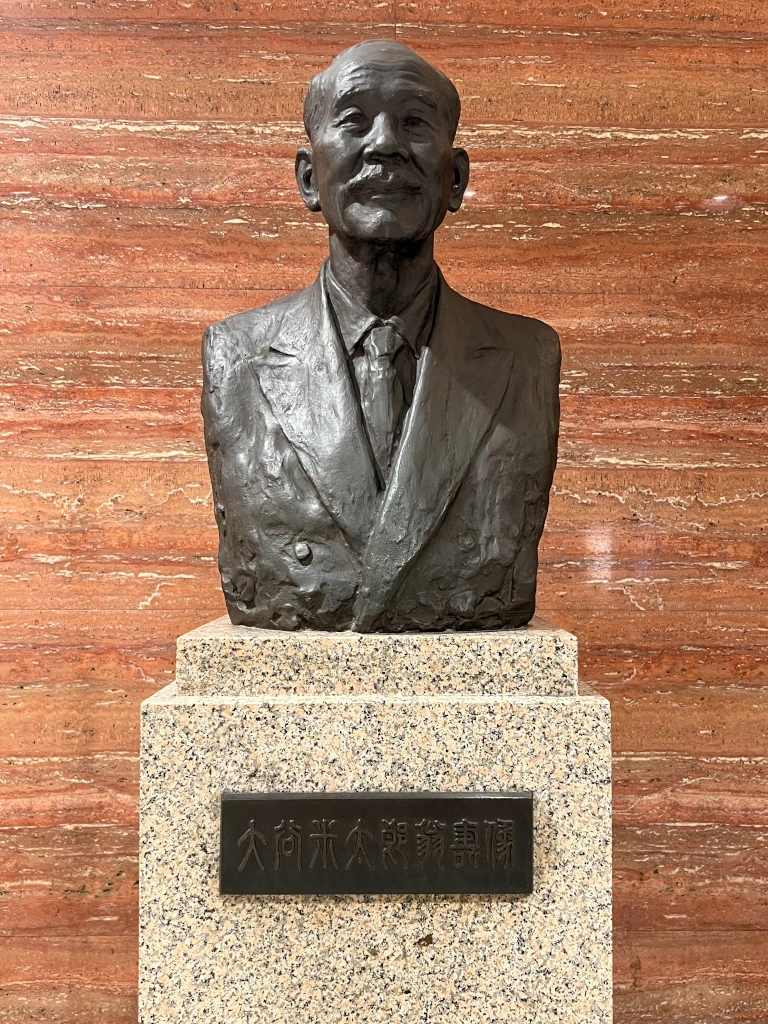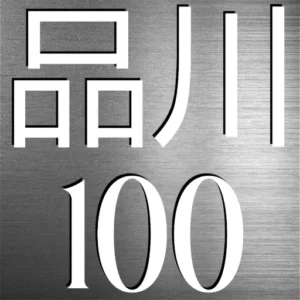🏙️ TOC and (former) Yūpōto in West Gotanda
🏢 The TOC Building – Tokyo’s Vertical Market Hub
The TOC Building in West Gotanda has been a cornerstone of Shinagawa’s commercial and retail life since its completion in 1970. Originally developed by TOC Co., Ltd. — a company that evolved from the Hoshi Pharmaceutical Factory — the TOC was designed to function as a major wholesale distribution and showroom complex. TOC stands for Tokyo Oroshiuri Center (Tokyo wholesale centre). Its 13 floors and 3 basements once boasted the highest floor-area ratio in Japan.
The building has served many purposes over the decades. Today, it houses everything from apparel and baby goods showrooms to offices, cafés. The roof is currently not accessible. Formerly, the roof had a golf practice range and even an Hikawa Shrine. Its exhibition halls and bargain events became legendary, and it has even served as a venue for university exams and qualification tests. With its diverse tenants — including Uniqlo, Daiso, Akachan Honpo, and clinics — the TOC functions like a vertical city unto itself.
🏗️ Redevelopment and a New Phase
In 2021, TOC Co., Ltd. announced a massive redevelopment plan: a new high-rise TOC building reaching 30 floors and 150 meters in height. Originally slated for completion by 2027, plans were delayed due to rising construction costs and market conditions. In 2024, the company decided to temporarily reopen the existing building with renovations, aiming for a new project start date around 2033. Until then, the TOC remains a functioning commercial site, retaining its eclectic appeal amid ongoing urban transformation.
🏨 Yūpōto – A Lost Landmark, Reborn as OMO5
Nearby, well a few hundred metres away, on the corner of Osaki Hirokoji once stood Yūpōto (ゆうぽうと), a large hotel and multi-purpose complex originally established by the Postal Life Insurance Welfare Corporation in 1982. With 240 rooms, a 2,000-seat hall, and various cultural and recreational facilities, Yūpōto was a rare public-private venture. After privatization, it served for years as an event venue and hotel until closing in 2015 due to aging infrastructure and red ink.
In 2024, the site reopened as OMO5 Tokyo Gotanda by Hoshino Resorts, a sleek high-rise designed to showcase Gotanda’s vibrant food scene and sparkling night views. Featuring a rooftop garden 60 meters above ground, trendy rooms, and a street-like indoor promenade, it brings a fresh vision to an area steeped in postwar business legacy.
🧭 Visitor Information (TOC Building)
Address: 7-22-17 Nishi-Gotanda, Shinagawa-ku, Tokyo 141-0031
Main Tenants: Uniqlo, Daiso, Akachan Honpo, clinics, cafés, post office, event halls
Notes: The TOC is currently operating during a redevelopment delay period.
Official Info: www.toc.co.jp
Where is TOC?
| what3words | ///pursuing.mended.salads |
| latitude longitude | 35.6066287 139.7214372 |
| Nearest station(s) | Gotanda station (Yamanote, Asakusa and Ikegami Lines) Osaki Hirokoji station (Ikegami Line) |
| Nearest public conveniences | Inside TOC |
Show me a sign.

It’s a sign but I’m a little confused. The spot’s name on the sign is is “Row of buildings, including TOC and Yu-Port”. They were never on the same row, they are on different streets. Looking the Japanese I think they were aiming for “A streetscape featuring TOC and Yu-Port”.
Withervee says…
I visited TOC before it was closed down for the redevelopment that’s not happening yet. It was a lot busier – the basement shop units were almost fully occupied. I was also looking for the spot 47: Hikawa Shrine and Spring and found it on the roof, or so I thought. I would be unlikely to find a natural spring on the roof of a 13 story constructure like this but, you never know – Japanese ingenuity – could be. Nevertheless, there was a Hikawa Shrine, a golf practice range and lots of smokers.
I don’t know if the shrine is still there. The route to the roof seems to be closed off.
The company TOC has some historical links with Hoshi Pharmaceuticals and so Hoshi University which is over the hill in Ebara district. In the foyer is a bust of…
🧓 Ōtani Yonetarō
Ōtani Yonetarō (大谷米太郎), one of Japan’s great hospitality pioneers.

Born in the 19th century and originally a sumo wrestler, Ōtani built an empire of postwar business ventures that culminated in the founding of the Hotel New Otani in 1964. He opened it just in time for the Tokyo Olympics, and it quickly joined the ranks of Japan’s “Big Three” luxury hotels.
The TOC (Tokyo Oroshiuri Center), where his statue now stands, was another of his ambitious projects — a space for trade, retail, and community activity. His name is still etched into the business landscape of Tokyo, and hotels bearing the New Otani name still operate across Japan. There is a hotel New Otani Inn at Ohsaki New City, a building complex owned by TOC. For a man who began as a rikishi and rose to become a symbol of Japan’s economic rebirth, the bust in Gotanda is a modest but fitting tribute.
Site Character
- Lifestyle 生活 (Seikatsu): ✔️
- Historical Significance 歴史 (Rekishi): ✔️
- Atmosphere/Natural Features 風土 (Fūdo): ❌
Who in their right mind would vote for this?
- Deal chasers
- Uniqlo fans
- Urban nostalgia buffs
- Hotel historians
- Roof smokers
Further reading
TOC – Wikipedia (Japanese)
While you’re there…
Visit the Hikawa shrine conveniently located on the ground floor.

